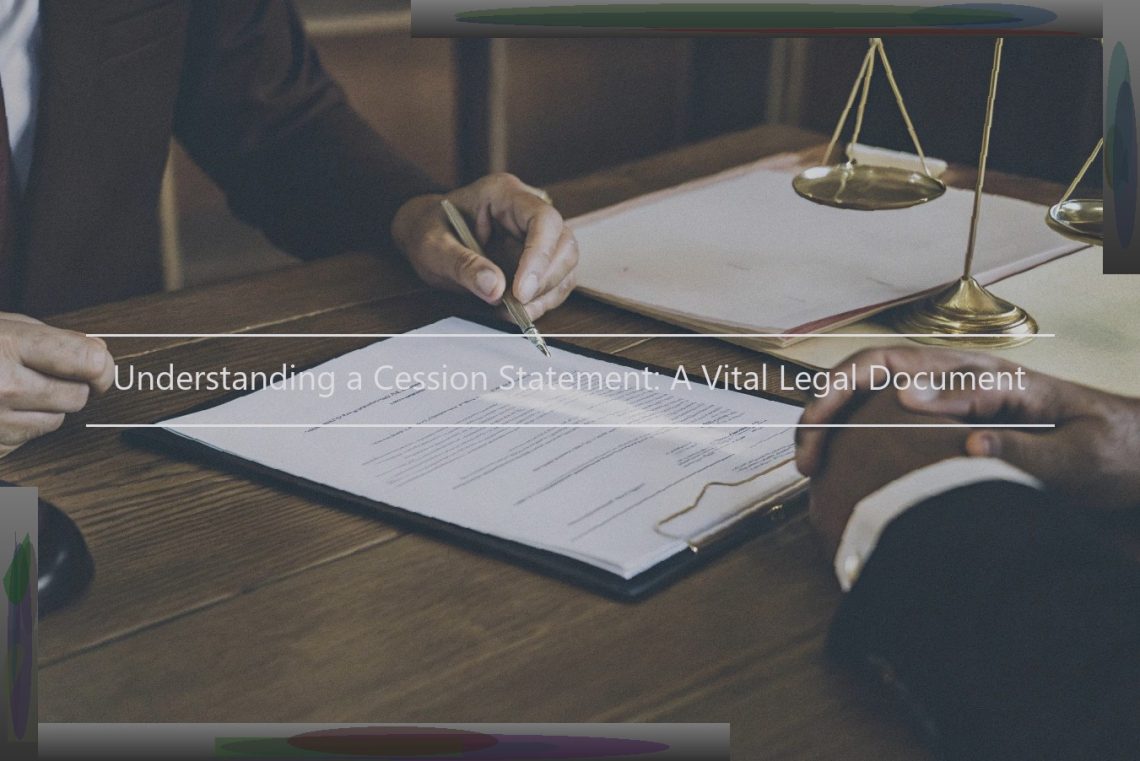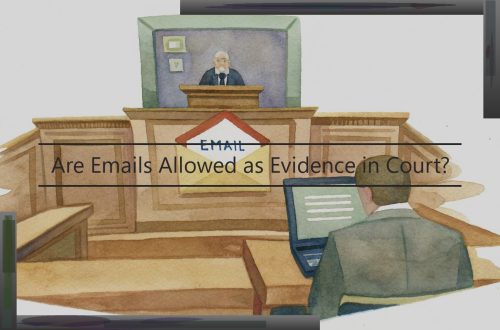
Understanding a Cession Statement: A Vital Legal Document
What is a Cession Statement?
A cession statement is an official document that acts as proof of a cession. An individual or business usually requires a cession statement when a financial institution needs documentation of a mortgage bond or loan, for example. A cession statement is a legal document that provides an accurate summary of the cession details of the cessionary.
A cession statement cannot provide any information that was not disclosed in the original disclosure and/or can be obtained from the original agreement . A cession statement must be issued within five years of the expiry date of the relevant agreement.
In addition to record-keeping purposes, a cession statement is also important for tracing the legal ownership of an asset like an immovable property, vehicle or plant & equipment. This helps when transferring assets where parties require transfer documents. It may also be necessary for potential buyers to have access to these documents.
It is important to note that a cession statement cannot be used for establishing the execution or validity of a cession.
Elements of a Cession Statement
The components of a cession statement often bring with them a wealth of information for investigation. They will generally contain:
Parties
Cessions will list the parties clearly. If it is not clear from a comparison with the companies register (and other public records), one would assume that these are all the parties to the transaction. However, where assets or rights are being transferred, it may be required that all transferors and transferees are listed in the cession statement. In this context, special care should always be taken to determine whether the correct people are referred to in the instrument. It is regrettable that clients are often referred to in a manner which could include the wrong person in the transaction.
Assets or rights
In the case of incorporeal rights this will be the rights ceded and the obligations ceded. In the case of corporeal rights, of which movable and immovable jural acts form part, the objects to be transferred will be specified. The description of the property to be transferred should be checked against title deeds, lease agreements and other instruments granting rights over property.
Legal obligations
In the case of the cession of rights only, the liabilities resulting from the rights will also be transferred. Even in the case of the cession of a loan it is essential to ensure that the party who is obliged to repay the loan is the party transferring its rights in the loan in the cession statement.
Categories of Cession
The most common form of cession is the absolute cession. The debtor is unaware of the change of creditor and he must still perform his obligations to the new cedent. All the rights of the cedent are transferred to the new creditor to the full extent of the law.
An example of an absolute cession is the cession of an insurance policy. In such case, the cedent would inform the cessionary to report the change to the insurer. In the event of a claim under the policy, the insurer would then be obliged to pay the amount directly to the cessionary. An absolute cession would also be applicable to the cession of a loan account and the insurance company would be obliged to make payment to the cessionary if a claim is made by the policy holder.
In terms of section 45(4) of the act a conditional cession would require the cessionary (the new creditor) to perform the obligations of the cedent to the debtor until the condition has been fulfilled. This means that the debtor would not have to approach the cessionary direct. The pre-existing agreed payment terms would remain unchanged.
The above could be applicable when the cedent has become insolvent and has reached a cession agreement with the cessionary. In such case the entity holding the account or loan book would require that the cessionary directly contact the debtors.
It is however the duty of the cedent to refresh the memory of the debtor and inform him or her that the account has been ceded to the cessionary. Failure to do so may be deemed to be unfair conduct and therefore against the provisions of the act. This type of cession is only likely to be accepted if the obligation is a single payment.
Legal Significance of a Cession Statement
A cession statement carries significant legal implications for all parties involved. Once signed, it has the effect of transferring real rights relating to the property in question. Such transfer of rights requires a public deed and registration of that deed in the relevant deeds office to take effect – a cession statement is thus not sufficient in itself to constitute an effective legal cession (unless the cession statement is regulating a concurrent sale).
It is important to note that, if separate to the original agreement of sale or agreement of lease, a cession statement can only be withdrawn by a document executed by the same parties and in accordance with the formalities of a cession. Any withdrawal to be registered at the relevant deeds office must also be in a form of a public deed.
Although a cession statement constitutes a legal cession of the relevant property, the cession statement does not fully dispose of the rights of the original party in respect of the property. This is because the relevant deed must be simultaneously registered in the names of the original party and the new party as co-lessors / co-sellers. In other words, the ceding party has ceded its rights in the property but at the same time retains those rights.
A cession statement does not entitle a cessionary to acquire ownership of the property. A cession merely transfers a right to property but does not transfer property itself. In order for a cessionary to acquire ownership of property, transfer must occur through registration of a notarial deed of sale and registration thereof at the relevant deeds office.
The consequence is that the lessor / seller may not only receive rent or purchase consideration from two persons, the lessor / seller continues to carry the risks associated with the ownership of the property should the cessionary default in any way.
Preparing a Cession Statement
To avoid disputes with parties in whom rights have been ceded, it is important that each cession be recorded in a single document known as a cession statement. The process of creating a cession statement usually starts with each party to the cession completing a Questionnaire in which they provide details of the cession. The necessary information can then be transferred to a Cession Statement which gives the parties to the cession an opportunity to check the details and ascertain whether there are any issues. A cession statement is usually drafted in tabular form so that the entries are easy to read and follow. Every cession must contain: This information should be followed by all serial numbers, vehicle reference numbers and the like. The vehicle details should be followed by two columns, one for the date that the cession takes effect and one for the date that it ends. It is vital to record the date on which the cession takes effect because it: It is also essential to record the date that the cession terminates so that the parties may be certain when they cease to be bound by it. If any special note or comment must be recorded. Various columns can be added to a cession statement for special circumstances. An example is shown below but the only relevant columns are the ones relating to the cession: Generally , a cession statement contains one entry per person who cedes to another. If a single cession involves several parties on both sides, we create several entries all of which are kept in one file with an index for speedy access. Some common mistakes to avoid when drafting a Cession Statement are: The cession statement should be created carefully so that it clearly reflects the cessions and accurately records the asset. It is important to keep the original cession statement where it is readily accessible because several different primary law firms may refer to it when rendering their services to you. Copies must be made and filed on each relevant ledger so that it is readily available to your professional consultants when they search the cession on your behalf. Similarly, all cessions created must be clearly marked as such by numbering them sequentially from the first to the last and the cession statements must be kept in a single numbered sequence which corresponds to the numbered cessions. This is essential because it is customary for the parties to refer to their cession documents for periods extending over many years and they must be easily accessible.
Common Questions About Cession Statements
Q: What is included in a cession statement?
A: A cession statement will include the following details:
Q: When is a cession statement needed?
A cession statement is always required when real property is sold or transferred.
Q: Why are cession statements so important?
While the cession statement serves a recording function, it also ultimately serves as the event that places the transfer on record.
Summary and Best Practices
A cession statement is a critical legal document that, as seen from the previous discussion, can have wide-ranging implications on the rights and interests of various parties (notably a surety, but also others). The lesson for drafters of cession statements is that it must accurately reflect the terms agreed between the principal debtor and the debtor cedent, on the one hand, and the debtor cedent and the creditor cessionary on the other hand. The lesson for debtors is that they cannot assume that any terms will be excluded from the cession statement. The lesson for creditors (especially cedents who retain their own security) is that you must live with the terms of your cession statement if any dispute arises.
In accordance with these lessons, our best practice for the drafters of a cession statement is to consider carefully the parties and their respective positions and to include the most important terms to them in their agreed cession statement. For the drafters of the underlying transaction , you should suggest to the drafters of the cession statement exactly what you require to ensure that your interests will be safeguarded.
The best practice for the signatory to a cession statement is to understand what you are signing, and not to simply rely on the inclusion of the words "nothing else." As a basic principle, if you are not sure what terms have been agreed by the parties, do not sign a cession statement. A cession statement can be signed unconditionally or subject to conditions precedent. If you are signing a cession statement which is not expressly subject to conditions precedent, the presumption is that you are signing the cession statement unconditionally. If you are signing a cession statement subject to conditions precedent, ensure that you have received confirmation from the creditor that the conditions have been met before releasing your security.





